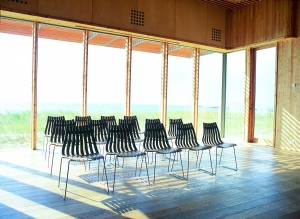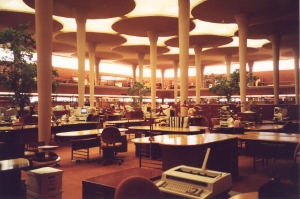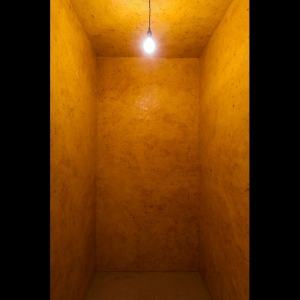|
Displaying items by tag: lighting
Renowned for its collection of lamps by Tiffany Studios, the New York Historical Society on Central Park West will renovate the Henry Luce III Center for the Study of American Culture and dedicate the space to displaying the 100 lamps it owns.
Designed by architect Eva Jiřičná, the 3,000-square-foot, two-story space is scheduled to open in early 2017, and will feature the Tiffany lamps lit in a darkened gallery, creating a dramatic, glowing effect for visitors.
Nearly a hundred examples of iconic Tiffany Studios works are forming the centerpiece of Sotheby’s sale of Tiffany and Prewar Design: The Warshawsky Collection in New York on May 19.
Led by the "Elaborate Peony" Lamp, circa 1910 (est. $600,000-$900,000), the variety of colorful glass works in mostly floral motifs is emblematic of the collection of noted Chicago businessman Roy Warshawsky and his wife Sarita, who assembled the works from the 1960s through the 1990s. There are also leaded glass lighting and windows, favrile glass, enamels, pottery, and bronze pieces produced by the firm founded by Louis Comfort Tiffany.
Jeffrey S. Evans & Associate's upcoming sale will feature the lighting and early glass collection of Pat and the late Bret Morey of Griswold, CT and part one of the Victorian glass collection of Robert E. Hefner Jr. of Rosharon, TX. Highlights include extremely rare fluid and early kerosene lighting of all types; rare colored Sandwich glass; fine Tiffany, Steuben, Durand, Loetz, and Mt. Washington art glass; and a large selection of Victorian opalescent glass.
The auction will take place on Saturday, January 31, 2015 at 9:30 a.m. ET. For more information, please visit www.jeffreysevans.com.
On Wednesday, January 7, 2015, Christie’s announced that Ambra Medda will be the new Global Creative Director of the auction house’s 20/21 Design Department. Based in London, the department is dedicated to furniture, lighting, ceramics, and sculpture from the Art Nouveau, Arts & Crafts, Art Deco, Modernist, and Contemporary movements. The auction house holds 20/21 Design sales twice annually in New York (June and December), Paris (May and November), and London (April and October).
Medda, an accomplished curator, co-founded Design Miami alongside developer Craig Robbins in 2005 and served as the fair’s director for five years. With annual shows in Basel, Switzerland, and Miami, Design Miami has emerged as one of the world’s leading celebrations of design culture and commerce.
On November 4, Christie’s London will offer works from the collection of the late architect and designer David Collins. Collins, who passed away in 2013, was known for his affinity for shades of blue and his masterful use of texture. Melding British refinement with metropolitan chic, Collins and his eponymous London-based studio created sophisticated and luxurious interiors for a swath residences, restaurants, hotels, and high-end retailers. Some of Collins' most celebrated projects include the Old World-inspired Wolseley restaurant in London, the Berkeley Hotel’s striking Blue Bar (also in London), and The Charles, which houses some of New York City’s most coveted private residences.
“Luxury–Colour–Texture” comprises 192 lots from Collins’ Kensington property and includes furniture, lighting, and works of art.
Design Miami/Basel, a global forum focused on collectible design, offered select guests a sneak peek of its offerings during a VIP preview on Monday, June 16. The event, which takes place alongside Art Basel in Switzerland, is open to the public from Tuesday, June 17 through Sunday, June 22.
Bringing together collectors, gallerists, designers, and curators, Design Miami/Basel celebrates design culture and commerce through museum-quality exhibitions, educational lectures, and commissions from the world’s top emerging and established designers and architects. The marketplace portion of the fair features celebrated design galleries from around the world exhibiting furniture, lighting, and objets d’art. Offerings range from 18th- and 19th-century antiques to early Modernist objects and contemporary design.

On Saturday, May 17, the 26th annual International Contemporary Furniture Fair (ICFF) will open at the Jacob K. Javits Convention Center in Manhattan. This year’s fair will feature over 570 exhibitors offering everything from furniture and seating to carpet and flooring, lighting, outdoor furniture, wall coverings, accessories, and textiles. For the first three days of the fair, admission is exclusive to trade professionals, including interior designers, architects, retailers, developers, manufacturers, store designers, and visual merchandisers. On Tuesday, May 20, the show will open to the general public.
Widely regarded as one of world’s trendiest design fairs, the ICFF is the go-to venue for designers looking to unveil their latest creations to the public. This year’s show features exhibitors from 38 countries, including well-known design hubs such as Denmark, France, Germany, Italy, Japan, Norway, Sweden, and Switzerland. Around 30,000 attendees are expected to visit the Javits Center and browse the show’s encyclopedic offerings.

On May 2, Frank Lloyd Wright’s S.C. Johnson Research Tower in Racine, Wisconsin, will open to the public for the first time since it was completed in 1950. Visually striking but functionally flawed, the fifteen-story industrial tower was shuttered in 1982, but not before gaining National Register of Historic Places status in 1976.
Noted for its tree-like structure, the S.C. Johnson Research Tower is regarded as one of the country’s most important examples of cantilevered architecture. The Tower’s floors are supported by a central core, which houses a narrow stairway, small elevator, and utility lines. Glass tubes surround the tower, providing natural light, which proved overly efficient on hot days. Despite its imperfections, Johnson employees created some of the brands most ubiquitous products (Glade air freshener, Pledge furniture polish, and insecticides Off! and Raid) within the Tower's walls.
After researchers moved out of the Tower over thirty years ago, the building sat mostly empty until this year, when S.C. Johnson finished a five-year, $30 million renovation of the Research Tower and neighboring Administration Center, which was also designed by Wright and opened in 1939. The Administration Center relies on pillars for structural support, which allowed Wright to use glass tubing for exterior walls, much like he did for the Research Tower. Wright also designed the furnishings for the S.C. Johnson Research Tower and Administration Center.
Visitors to the S.C. Johnson complex can explore a new exhibit focused on Wright’s homes in Spring Green, Wisconsin, and Scottsdale, Arizona. The show was organized in partnership with the Milwaukee Art Museum and the Frank Lloyd Wright Foundation and includes some of the architect’s own home movies. A second exhibition presents a mock research lab from the 1950s, complete with beakers, flasks, centrifuges, balances, test tubes, and graduated cylinders found in company storage rooms.
Wright, a Wisconsin native, designed commercial buildings, apartment towers, recreational complexes, museums, religious houses, residences, furniture, lighting features, textiles, and art glass. According to the Frank Lloyd Wright Foundation, “he redefined our concept of space, offering everyone the opportunity to live and grow in nourishing environments, connected physically and spiritually to the natural world.”
Free, two-hour tours of the Research Tower and Administration Center will be offered from 9AM to 2:30PM Fridays, Saturdays, and Sundays through September 27.

The Philadelphia Museum of Art will regild the thirteen-foot sculpture Diana (1892-94), which resides in the its Great Stair Hall. The work, which is by the Beaux-Arts sculptor Augustus Saint-Gaudens (1848-1907), once sat atop Madison Square Garden in New York City.
The undertaking was made possible by a grant from Bank of America through its Global Art Conservation Project and will be helmed by the institution’s Conservation Department and the department of American Art. The regilding is expected to take four months to complete. and will require corrosion removal, surface preparation and the laying of 180 square feet of gold leaf. This process will be followed by any adjustments necessary to improve the appearance and lighting of the sculpture. The work was significantly eroded while on view at Madison Square Garden and cleaning and repair efforts that took place before the sculpture was installed in 1932 at the Philadelphia Museum of Art added to the damage.
The Philadelphia Museum of Art will document each step of the conservation and regilding process so that the public can monitor Diana’s progress.

The Phillips Collection in Washington, D.C. will unveil its first permanent installation in over 50 years. Founded by the art collector and critic Duncan Phillips (1886-1966) in 1921, the Phillips Collection is the United States’ first modern art museum.
The new addition to the institution is a room made entirely from beeswax titled Wax Room. The experimental piece is the work of Wolfgang Laib (b. 1950), a conceptual German artist who is well known for his sculptural works made from natural materials. Laib has been making his beeswax chambers for over 25 years using hundreds of pounds of melted beeswax to coat walls and ceilings. The otherworldly spaces he creates are warmly lit by single hanging light bulbs.
The Phillips Collection’s other permanent installation is its Rothko Room, which holds four paintings by the abstract expressionist painter Mark Rothko (1903-1970). The intimate presentation of Rothko’s works was added as a permanent exhibit in 1960, six years before Duncan Phillips’ death. Phillips worked closely with Rothko, deciding which walls to hang each painting on and the kind of lighting and furniture that would best suit the room. The Phillips Collection was the first American museum to dedicate a space to Rothko’s work and it remains the only one designed in collaboration with the artist himself.
Laib’s progressive work is a welcomed addition to the Phillips Collection. While Phillips’ holdings consisted of many Impressionist paintings and other mainstream works, he also had a taste for the unconventional. Phillips was one of the earliest patrons of American modernists including John Marin (1870-1953) and Arthur Dove (1880-1946) and also harbored great admiration for Abstract Expressionism before it became a respected art movement.
Laib’s Wax Room will be unveiled on March 2, 2013.
|
|
|
|
|